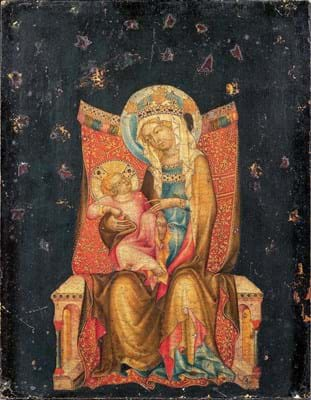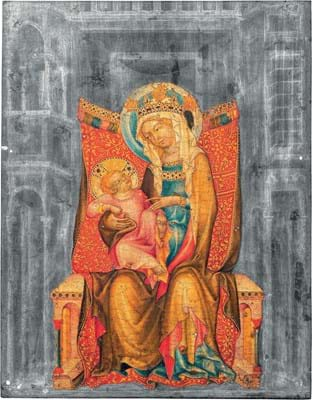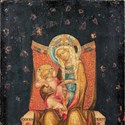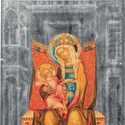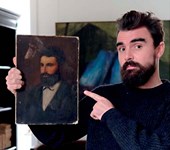The work was knocked down at €5m (£4.27m) to a dealer acting for the Metropolitan Museum of Art in New York.
A curator at the museum told ATG that the picture represented a chance to plug a gap in its collection that it long thought might never be filled.
The work will now be carefully restored to remove 19th century overpaint and reveal an architectural scene that an X-ray suggests lies underneath.
The painting that drew nine bidders was by a mid-14th century painter who was active in Bohemia. Working in the International Gothic style, the artist is known as The Master of Vyssi Brod after an altarpiece created for the Cistercian convent of that name in southern Bohemia. The altarpiece is now in the collection at Prague’s National Gallery, although it still belongs to the convent of Vyssi Brod.
Four of the panels in the altarpiece are all attributed to the master while the five other episodes are thought have been done by his workshop.
The 10¼ x 8¾in (26 x 22cm) work, offered on November 30, was a small tempera on fruitwood panel dating from c.1350. It depicted the Virgin and Child enthroned.
It was kept in a private Burgundian collection for probably more than a century before being consigned.
The panel was authenticated by the Paris Old Master expert Cabinet Turquin which spent four months investigating and confirming the attribution of the painting by comparing it to other works by the artist. Scientific analysis also revealed an architectural structure hidden under the repainting added in the 19th century.
The attribution was also confirmed by Olga Pujmanova of the National Gallery Prague and Jan Klipa, Gothic painting specialist at the Institute of Art History at the Czech Academy of Sciences in Prague, who both examined the work in person.
Estimated at €400,000- 600,000, the painting was contested by four bidders in the room and five on the phone – with the hammer finally falling to the Benappi Fine Art gallery of London and Turin on behalf of the Met museum.
Explaining the purchase, Keith Christiansen, chairman of the Met’s European paintings department, told ATG: “Bohemian paintings are very rare outside the Czech Republic and, in particular, Prague, and a work of this beauty and importance has not come on the market in a very long time.
“We have long viewed the absence of a work such as this one to be a gap we might never be able to fill in The Met collection. The picture will require careful conservation treatment to remove the overpainted background and reveal the elaborate architectural throne.”
It was the third high-value sale at a provincial French auction house that Turquin had been involved with this year. The ‘cabinet’ had appraised and researched another small panel painting depicting the Mocking of Christ by the early Italian master Cimabue which sold for €19.5m (£16.9m) at Actéon in Senlis in October.
Turquin had al so authenticated the painting ascribed to Caravaggio which was discovered in an attic in Toulouse and later was sold privately for an undisclosed sum believed to be in the region of €30m (£27m) in June by auction house Marc Labarbe.


